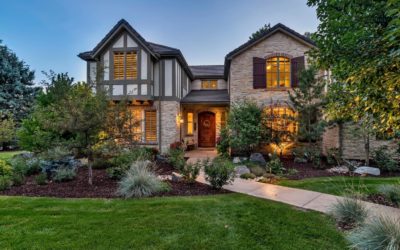Don’t wait until the tree in your yard is dead to take action.
If a tree falls in a neighborhood and no one is around to hear it, does it make a sound? It might, except that you’re likely not to hear the tree noise above the screams from neighbors about the resulting damage.
Unhealthy trees pose a risk to any standing structures that happen to be nearby. From fences to homes to power lines, the potential for severe damage to your property (or your neighbor’s) is enormous. Dead trees falling on power lines can take out the power in your neighborhood for days, and can cause catastrophic house fires. Not only that, but any damage caused by your tree to someone else’s property will likely become your responsibility.
That said, if you’re not intimately familiar with trees, it can often be difficult to tell the difference between a tree’s seasonal changes and a tree that’s diagnosable as unhealthy. Look for these signs of an unhealthy tree:
Large Cavities: Inspect your trees regularly for large cavities. Caused by animals or humans, holes bored deeply into the base of a tree or a heavy trunk can make the tree structurally unstable. An unstable tree can easily be easily toppled by a heavy snowstorm or even a strong gust of wind.
Broken/Dead Branches: As you’re inspecting the trunk for cavities, keep an eye out for broken branches or branches without leaves on them. An unhealthy tree will often lose its ability to maintain its branches, and as such they become brittle and dry. Numerous brittle branches are not only likely to fall, but they are also much more likely to catch fire
Leaves: If the leaves on the tree are off-colored, oddly shaped, or falling out of season, then the tree could even be suffering from a bug infestation. If it’s an evergreen that doesn’t lose its needles annually, keep an eye out for discoloration or bare branches. When needles at the crown of the tree or the tips of the branches start to turn brown, it’s usually indicative of bark beetles, which can quickly kill an evergreen (and spread to other trees) if left unchecked.
Rotting Wood: Living things do not rot, so if your tree appears to be rotting, it’s a clear indication that your tree is sick. Unfortunately, trees can often rot from the inside out, making it difficult to spot a problem before it’s too late. When you’re looking for rotting bark, check for bark that is too soft or flakes off too easily. Also watch for discolored sap seeping from the tree. These can be signs your tree is rotting from the inside.
Mushrooms and Carpenter Ants: Rotting and unhealthy trees tend to grow mushrooms on the trunk, branches, and/or at the base of the tree. Fungi thrives on damp, rotting earth, and a rotting tree is no different. You may also find that carpenter ants accompany fungi. They are attracted to the softer bark, and their presence is usually marked by mounds of sawdust at the base of the tree.
Check your trees every 3-6 months for damage or decay. That ensures you have enough time to respond to problems before your tree becomes unsalvageable or causes severe damage. Additionally, if you have other trees in close proximity, catching an unhealthy decay early on can help prevent it from spreading to your other trees. Contact us today for a free estimate.




